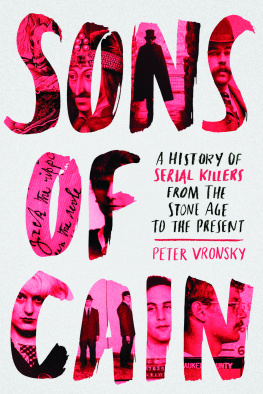William Palmer
Dr William Palmer was a gambler, a drinker and a ladies man. At the time of his trial the public revelled in lurid stories surrounding his debauched lifestyle, but Dr Palmer or the Rugeley Poisoner as he became known had more on his conscience than a few seedy indiscretions.
In one of the most sensational trials of 19th century Britain, Dr William Palmer, of Rugeley in Staffordshire, was found guilty of murdering John Parsons Cook by poisoning him with strychnine, the first such conviction in British legal history. After Palmers arrest, the notoriety of the case led to an Act of Parliament, later known as the Palmer Act, passed to allow the trial to be transferred from Staffordshire to the Old Bailey in London.
The public were fascinated by details of Palmers debauched lifestyle that were revealed in newspapers of the day. Salacious tales of compulsive womanizing and excessive gambling shocked conservative Victorian society and ultimately served to hasten Palmers conviction for Cooks murder. But there are many who believe his trial represents a travesty of justice and that Palmer was found guilty more for his notorious reputation than by the evidence presented by his prosecutors. Some believed that a show trial was engineered by the British government to distract public attention from the perilous state of the country at the time. But could the publicity surrounding the immoral misdeeds of one man, however scandalous, really be expected to save an unpopular government?
Controversy had followed Palmer for decades prior to his arrest. Friends, patients and even his immediate family continued to die with alarming frequency, and more often than not Palmer stood to gain from their deaths. He was born into a respectable middle-class family and trained as a doctor in London and at Stafford Infirmary, where rumours surrounding his drinking and gambling first began. He is thought to have shown an unusual, and not entirely healthy, interest in the poisons kept in the dispensary, although it is worth noting that many poisons were widely used in conventional medicine at the time.
The first mysterious death occurred in 1846, shortly after Palmer had qualified as a doctor and set up practice in Rugeley. On a cold and wet October night Palmer arranged to meet George Abley, a plumber, in a local pub. As was Palmers habit, he made a bet with Abley concerning the plumbers ability to drink copious amounts of brandy. Abley won the bet, but became violently ill and left the pub shortly afterwards. Some hours later he was found dead in the stables outside. The Staffordshire coroner recorded a verdict of death by natural causes. Abley was suffering from tuberculosis and could have died from this, exacerbated by the adverse weather conditions and by alcohol poisoning. Nevertheless, rumours about his death would not be quashed and gossip was rife surrounding the exact nature of Palmers relationship with Ableys wife, who was a regular patient of the good doctor.
A year later Palmer married the beautiful and fascinating Anne Thornton (Annie), the daughter of a well-heeled family who owned a number of properties in the Rugeley area. Mary Thornton, Annies mother, took an instant dislike to Palmer possibly because shed been party to local gossip but in January 1849, Mary became ill and, despite her reservations, moved into her son-in-laws house. Within only a few weeks, Mary died and although she had been suffering from the effects of years of alcohol abuse, the coincidental timing of her death added fuel to the fire. Palmer probably expected his wife to benefit substantially from her mothers will but, if he did, he was wrong. Mary Thornton didnt leave any of her portfolio of properties to Annie. Perhaps Palmer had underestimated his mother-in-law.
Over the next six years an unusual number of Palmers patients and creditors died shortly after leaving his company. During the same period his wife gave birth to five children, but only one survived for more than a few months. In September 1854, Annie also became ill and was diagnosed, by another doctor, as suffering from cholera. She died a few days later. After Annies death it transpired that Palmer had taken out a large life insurance policy on her only weeks before she fell ill, and he had only paid the first instalment by the time of her death. There is no direct evidence to link Palmer to the death of his wife, but it is hardly surprising that some people jumped to certain conclusions. A year later Palmers brother also died shortly after Palmer had taken out a policy on him. This time the insurance company refused to pay out.
In November 1855 Palmer committed the crime that sealed his fate forever. He accompanied his friend and fellow gambler John Parsons Cook to a race meeting in Shrewsbury. Cook got lucky, winning 3,000, an enormous amount of money for the time. Palmer, as usual, lost heavily. At a dinner to celebrate his big win Cook began to feel unwell and returned to Rugeley with Palmer, taking up residence at the Talbot Inn. Cook never checked out. Within days of his death Palmer went to London to collect Cooks winnings. A postmortem and inquest were held at the insistence of Cooks stepfather, and a verdict of wilful murder was returned. Palmer was found to have bought strychnine just days before Cooks death and was arrested. The official reason for transferring the trial to the Old Bailey was because it was thought a Staffordshire jury would be prejudiced by local hearsay. Even at the time some believed the transfer had more to do with focusing public attention on Palmers debauched dealings rather than the governments on-going problems. A guilty verdict was reached and Palmer was sentenced to death. He was returned to Stafford Prison where, at 8am on 14 June 1856, over 30,000 people flocked to see him hanged by the neck.
It is impossible to say, over 150 years after the events, whether Palmer was definitely guilty of any or all of the murders for which he stood accused. It is certainly true that he was an entirely self-involved and ruthless man who showed absolutely no concern for anyone else, neither his friends and family nor the patients whose care had been entrusted to him. William Palmer had the mentality of a serial killer, which is what has led to him being dubbed the Prince of Poisoners and has seen him go down in history as a prototype for the killer-doctors who would follow, including the infamous Harold Shipman.
Mary Ann Cotton
Mary Ann Cotton murdered multiple husbands, lovers and even her own children. People around her were dropping like flies, but when one after another succumbed to mysterious intestinal disorders no-one raised an eyebrow. Did she kill out of poverty or for pleasure?














